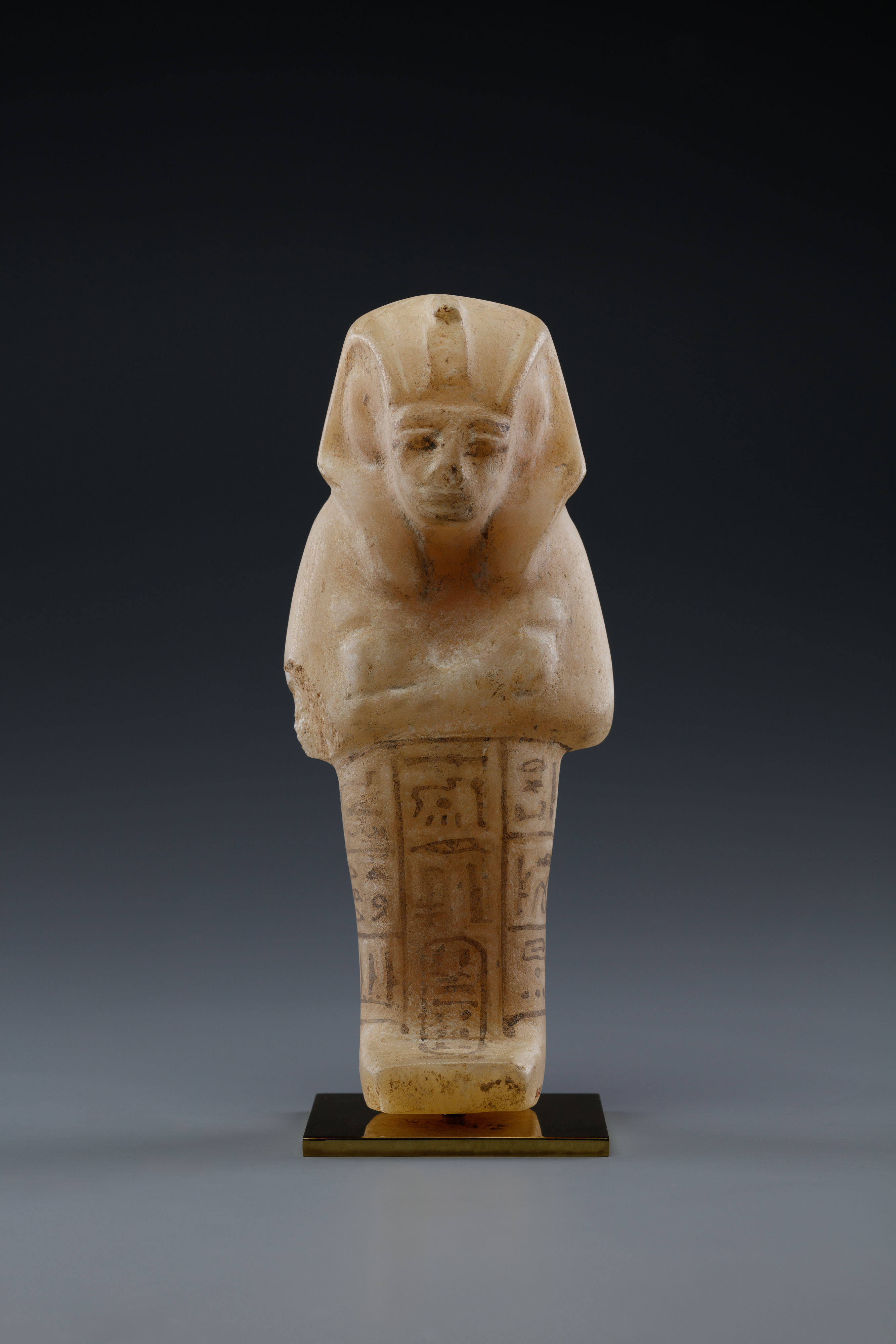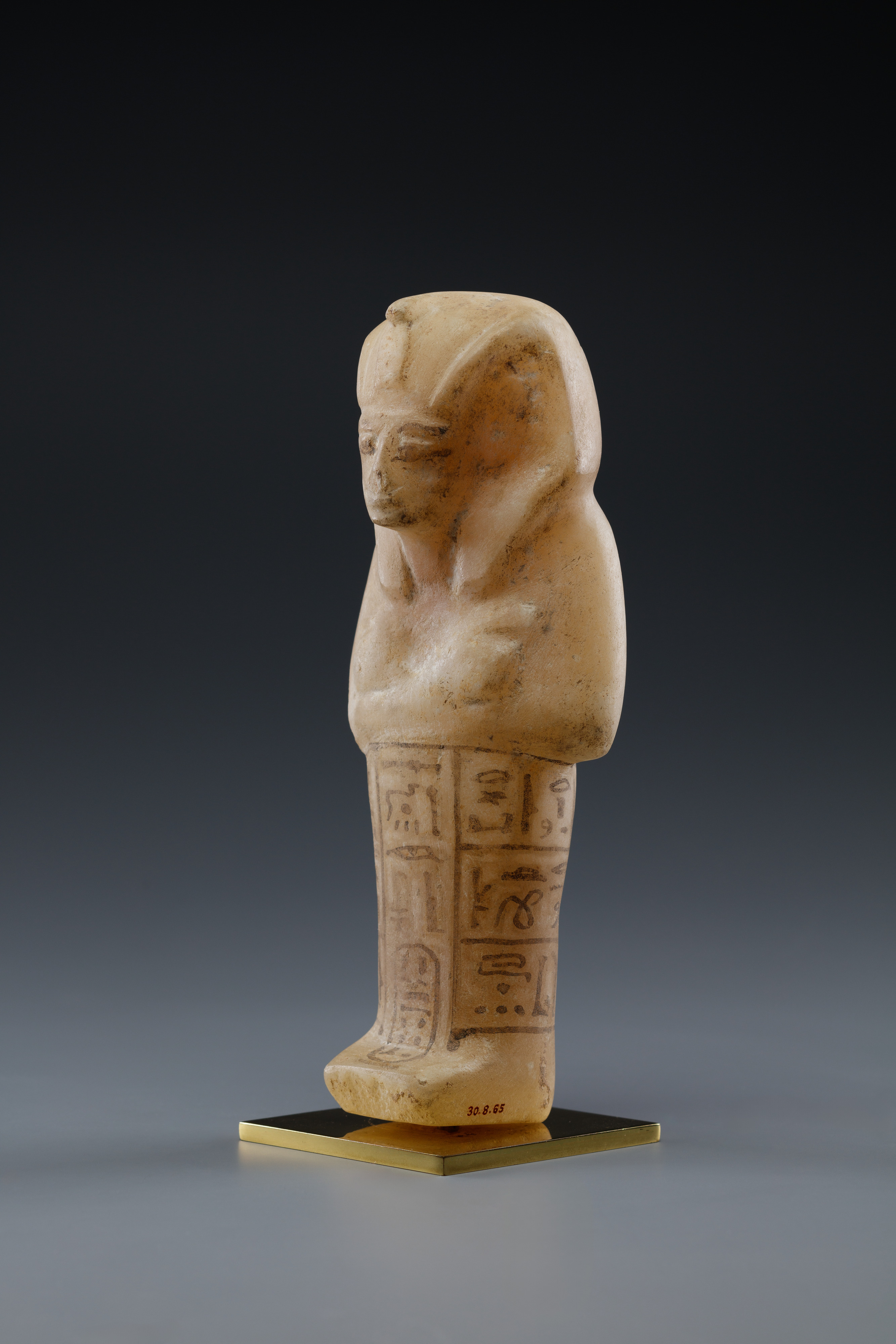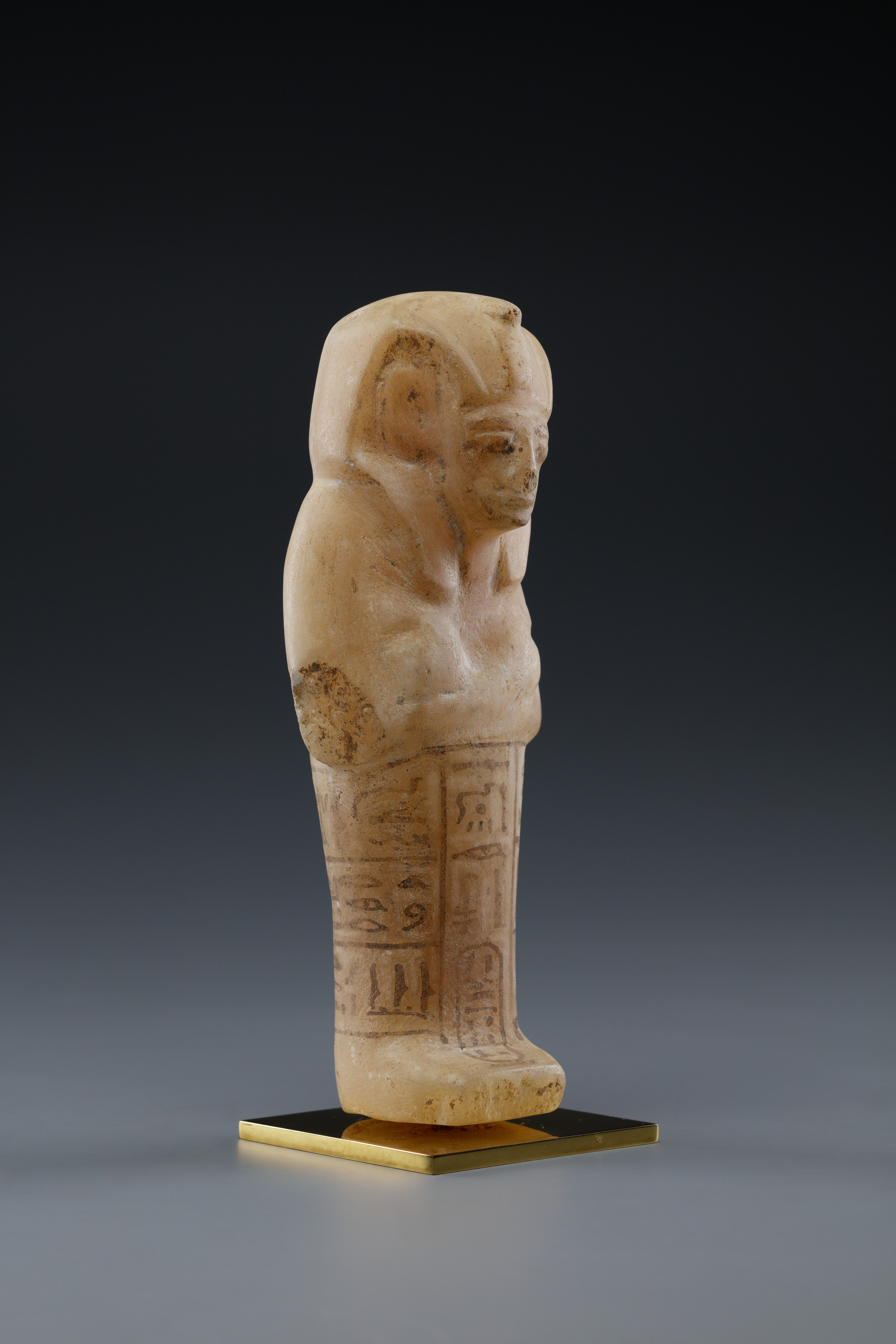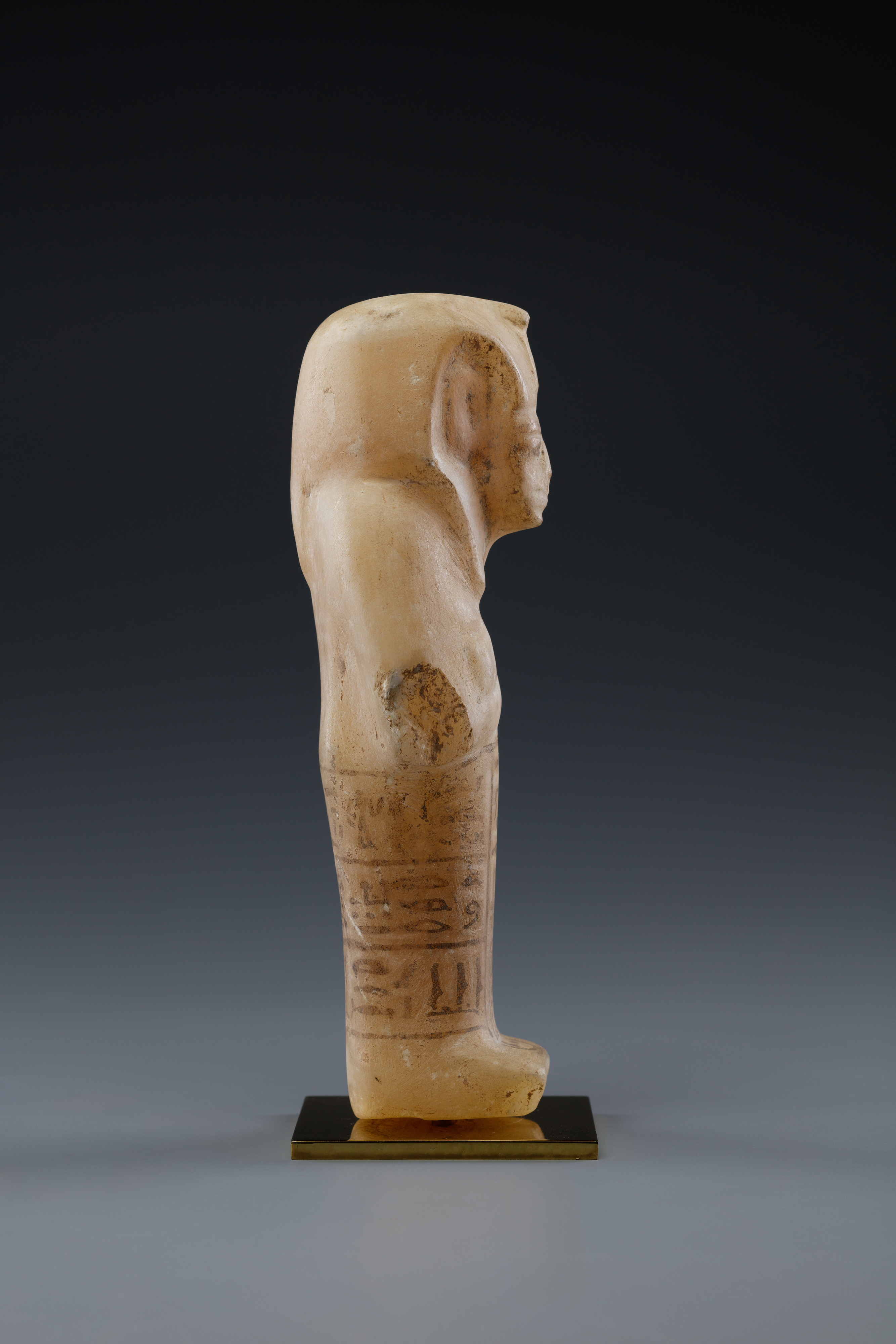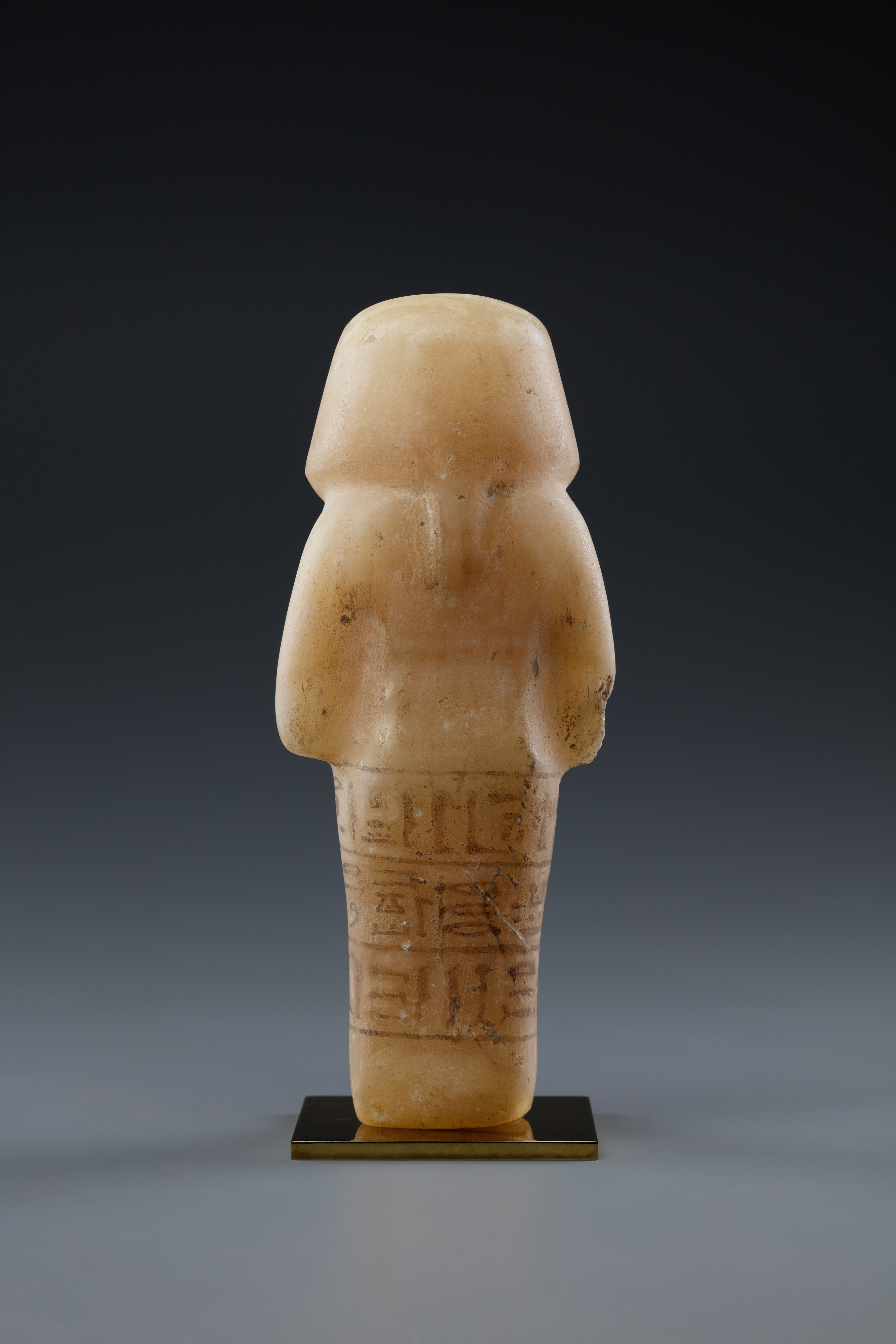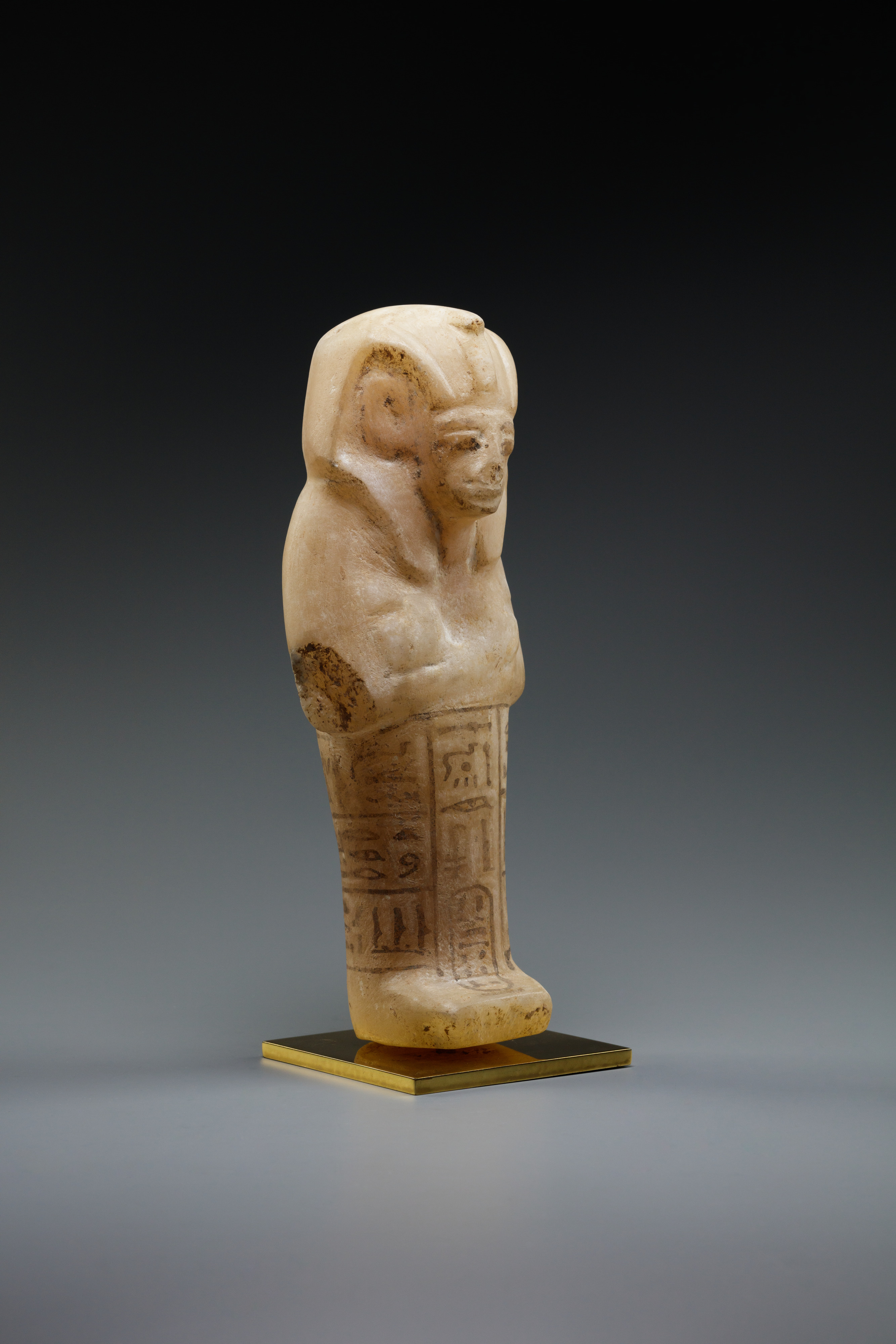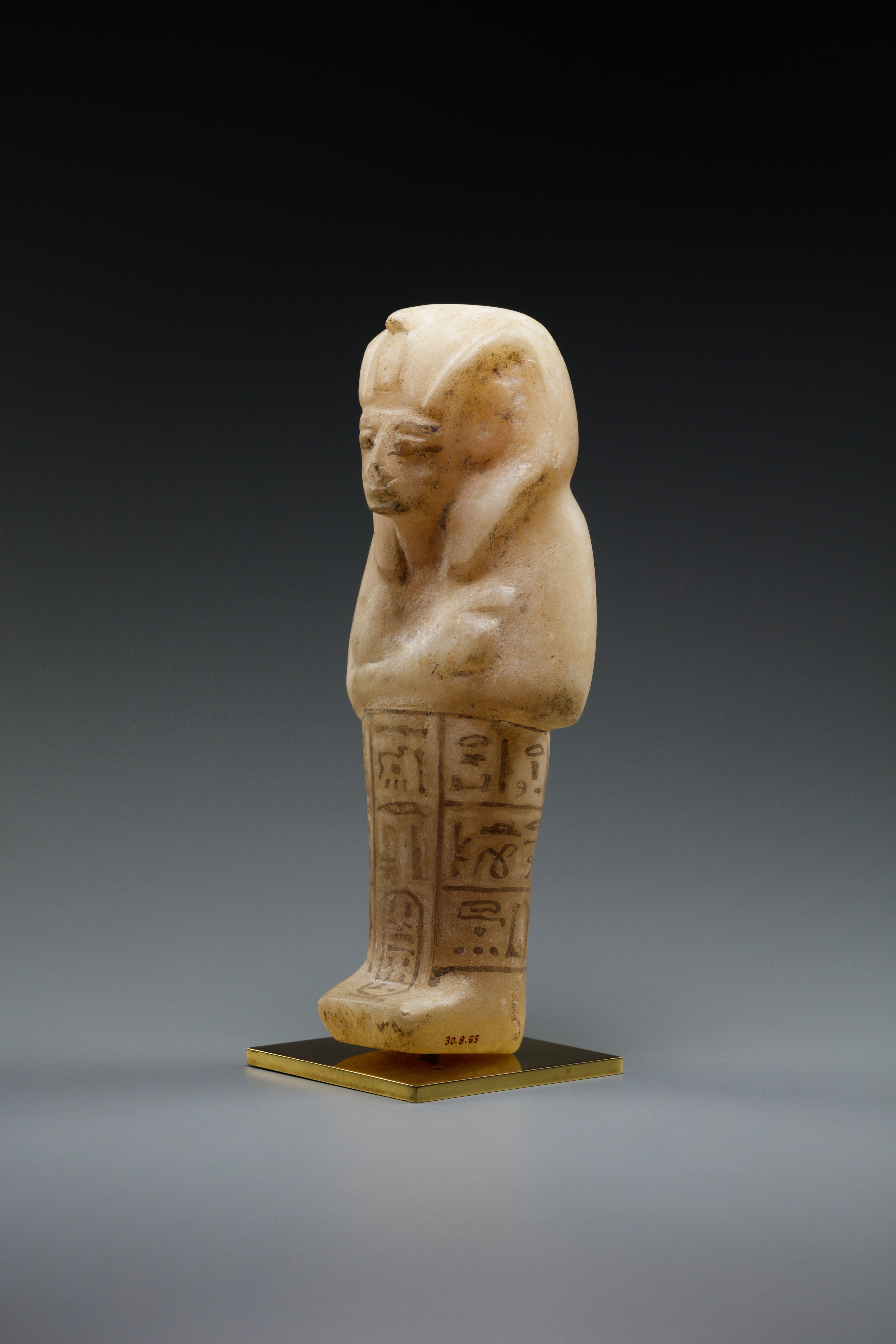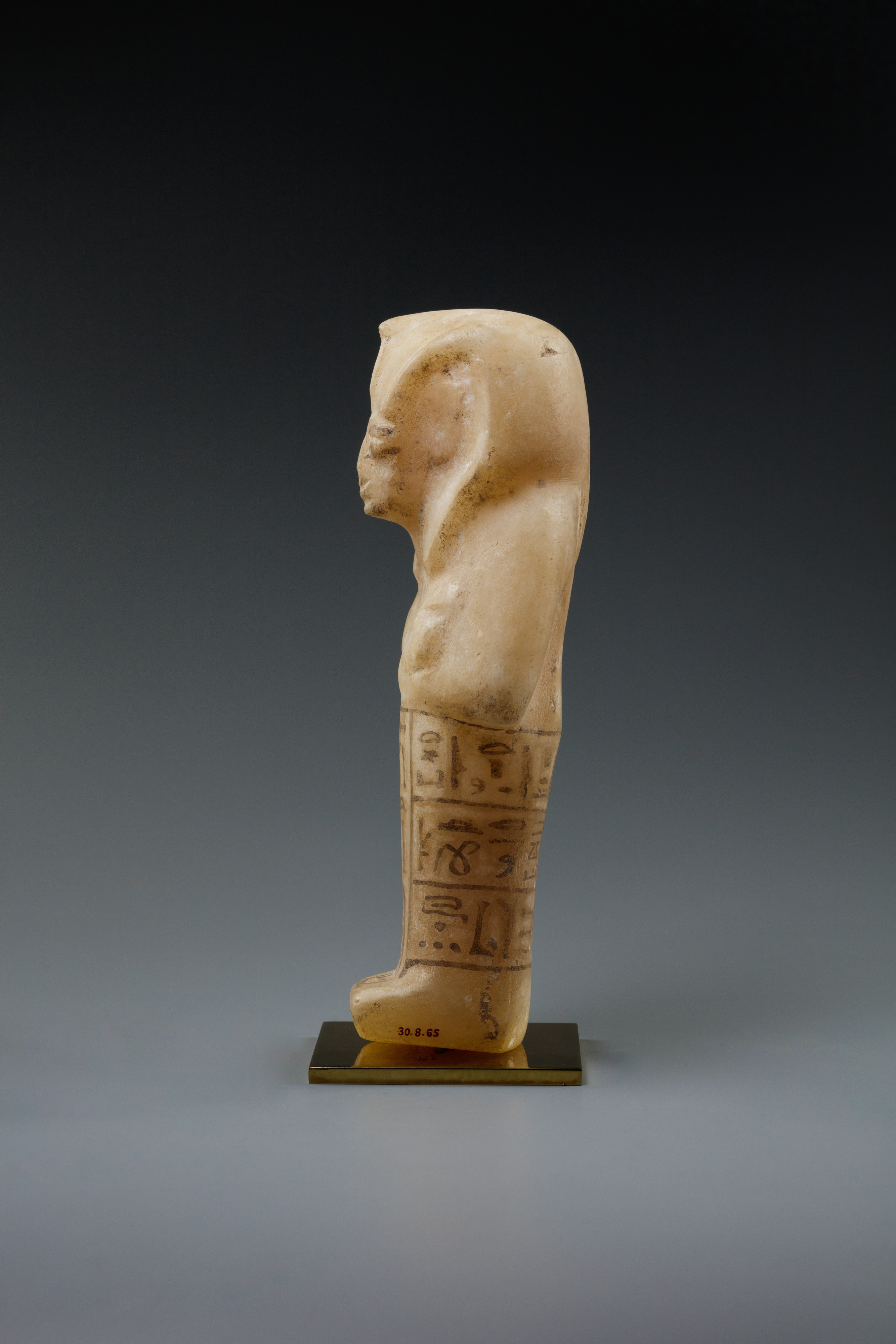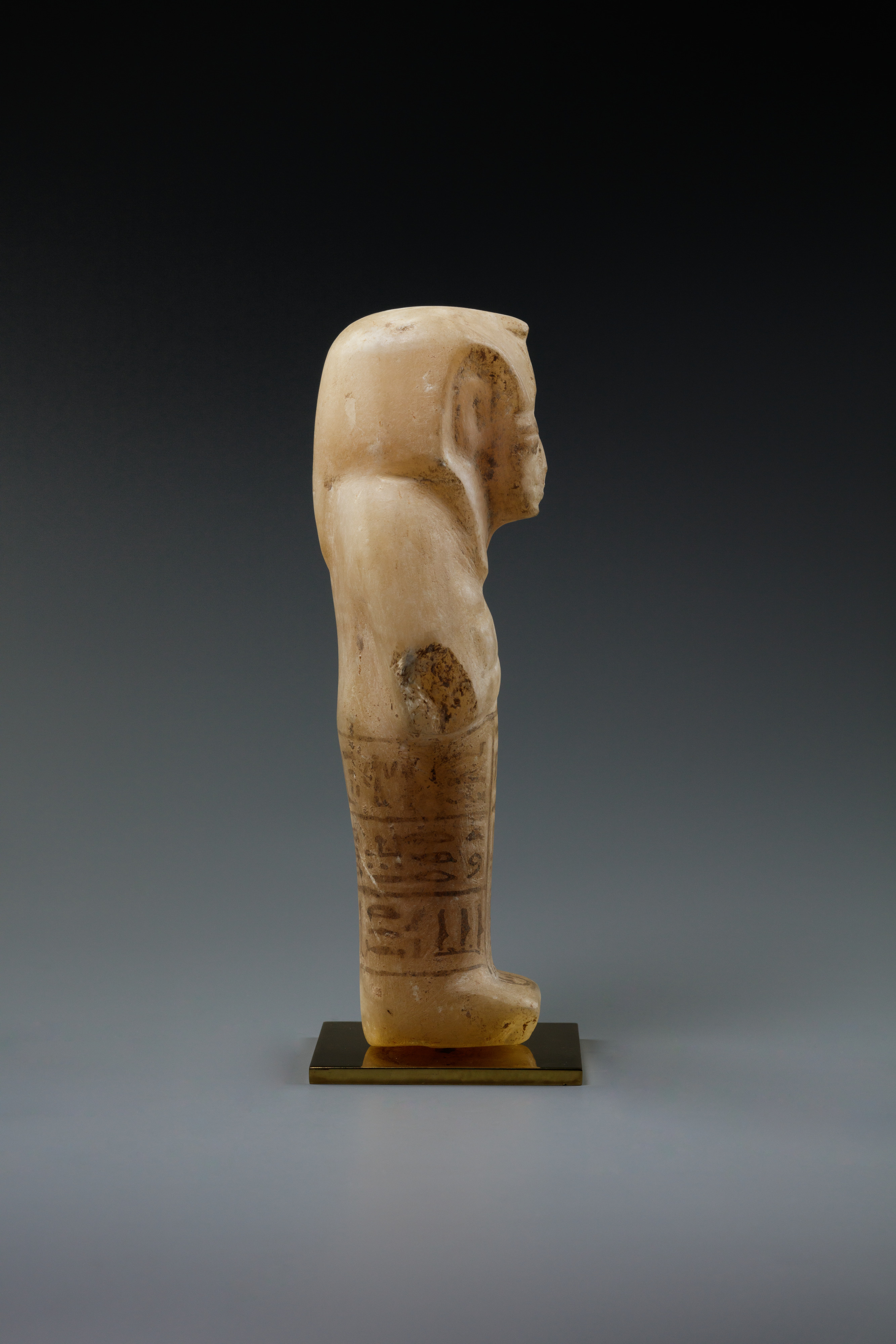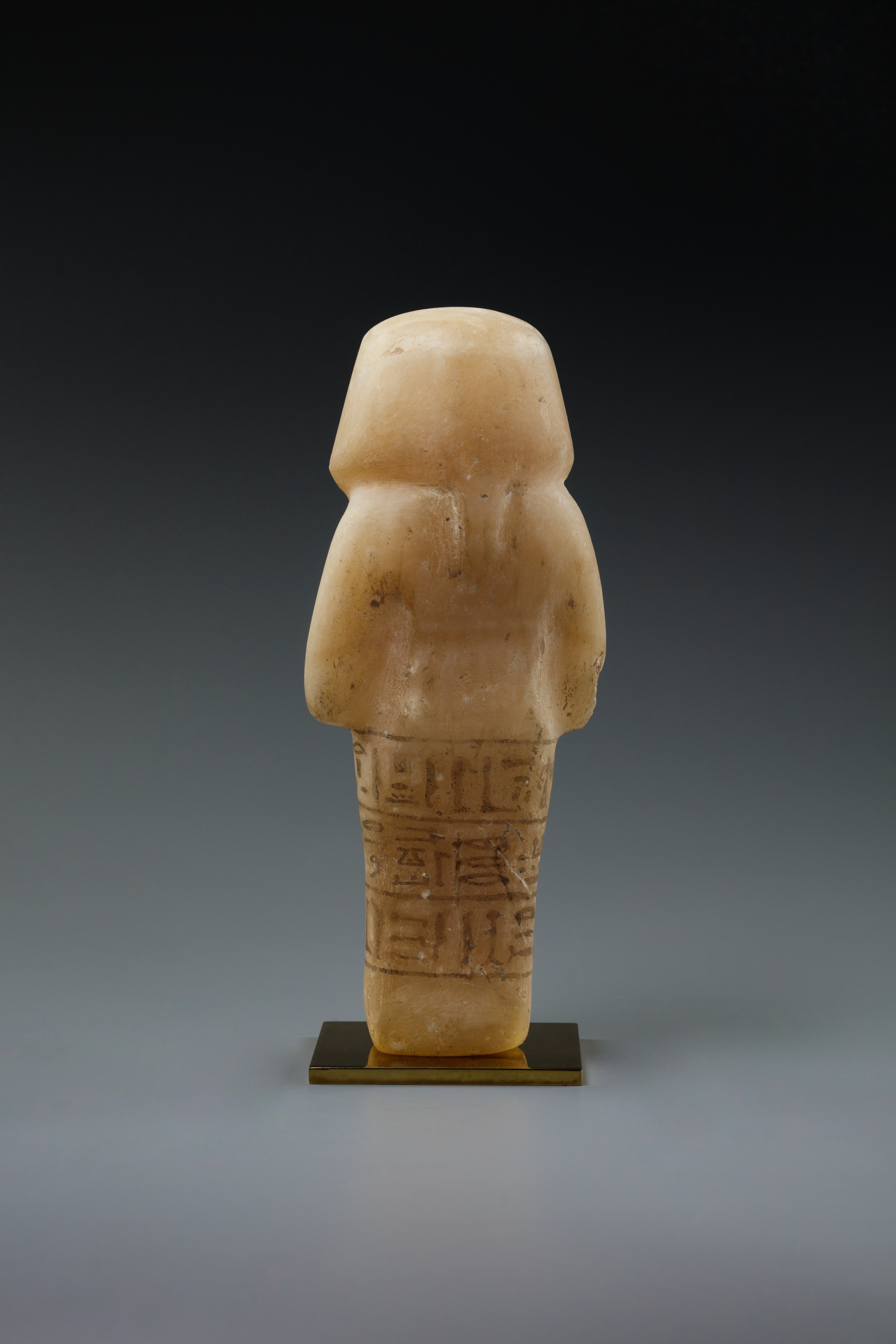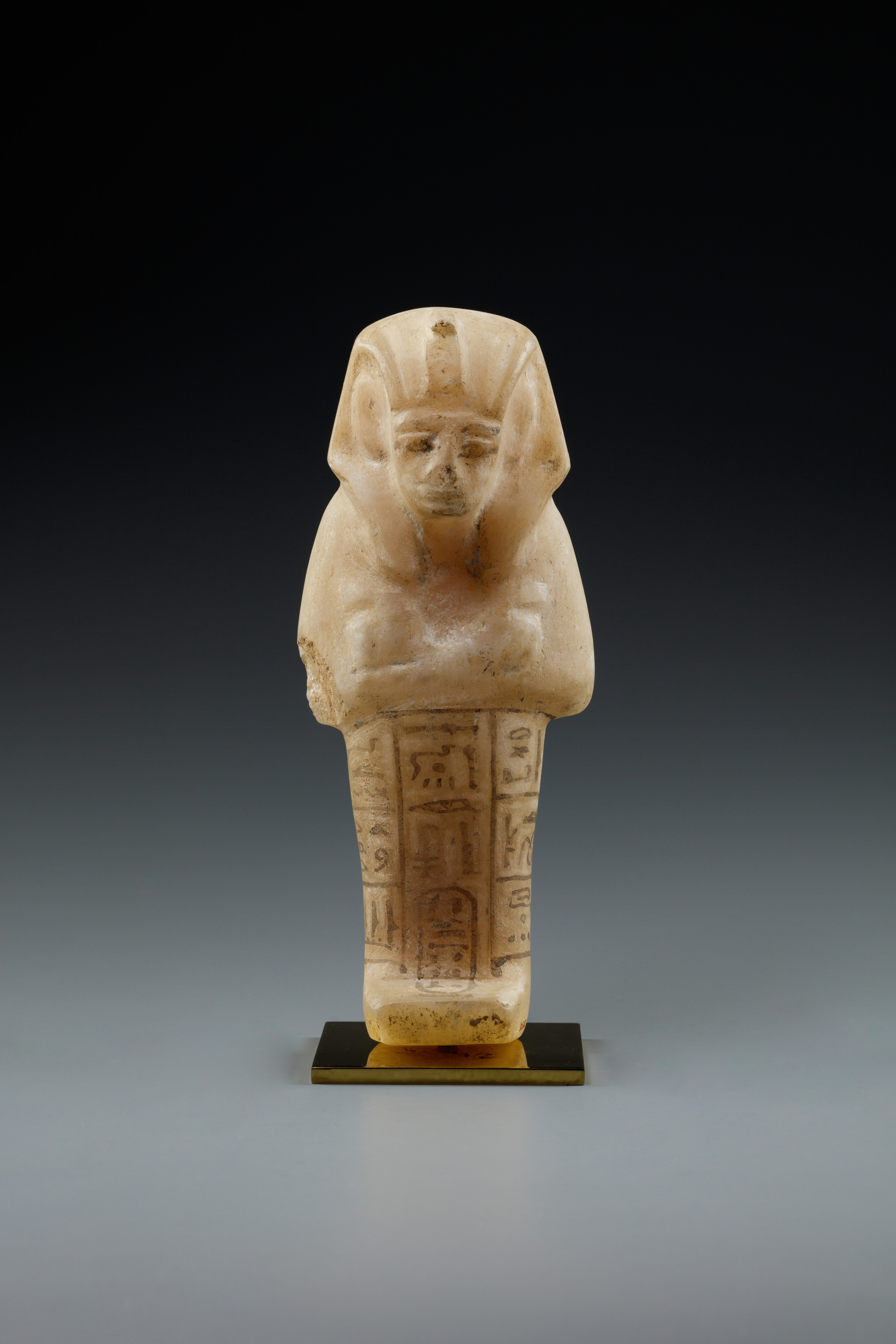Shabti of Siptah
New Kingdom, Ramesside
Not on view
This shabti belongs to Siptah, the penultimate ruler of the Nineteenth Dynasty. Shabtis were placed in a tomb so the owner's spirit would not have to perform manual labor in the afterlife. The figurines were often inscribed with the "shabti text" – chapter 6 of the Book of the Dead – a spell that exhorts the shabti to substitute itself if the owner is asked to till the fields, irrigate the land, or transport sand from east to west. To this end, even royal shabtis are often depicted clutching a pick and a hoe, and with a basket hanging over one or both shoulders.
Theodore M. Davis, who discovered the tomb of Siptah (KV 47) in 1905, found there hundreds of fragments of Egyptian alabaster. Many of these belonged to between 40 and 50 shabtis inscribed with the names of Siptah. Some were sections of funerary vessels. The rest belonged to at least three sarcophagi and two canopic chests, one belonging to Siptah, the other to a Queen Tiye, who has not yet been identified with certainty.
This image cannot be enlarged, viewed at full screen, or downloaded.
This artwork is meant to be viewed from right to left. Scroll left to view more.



